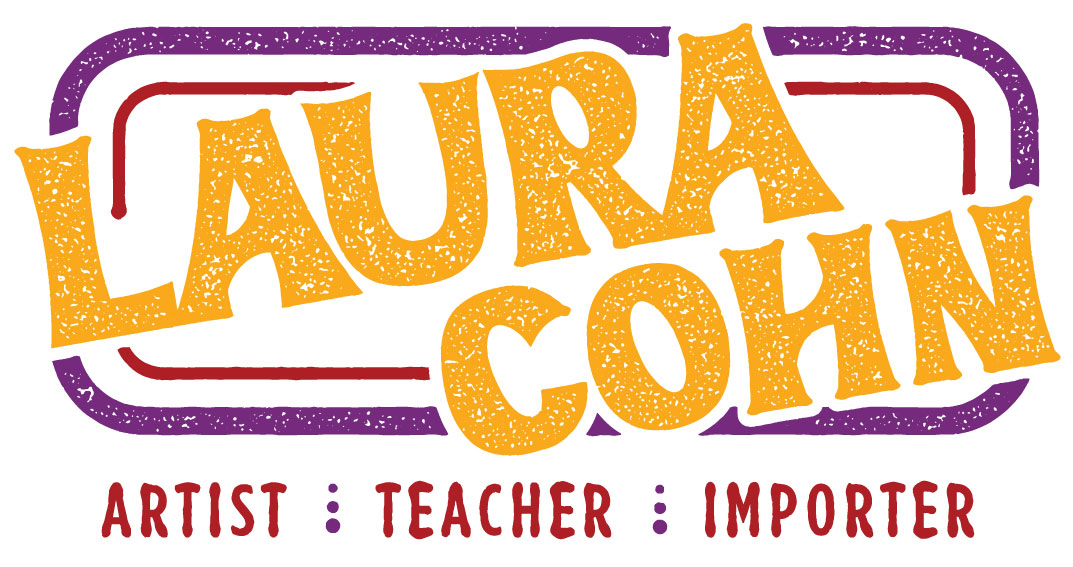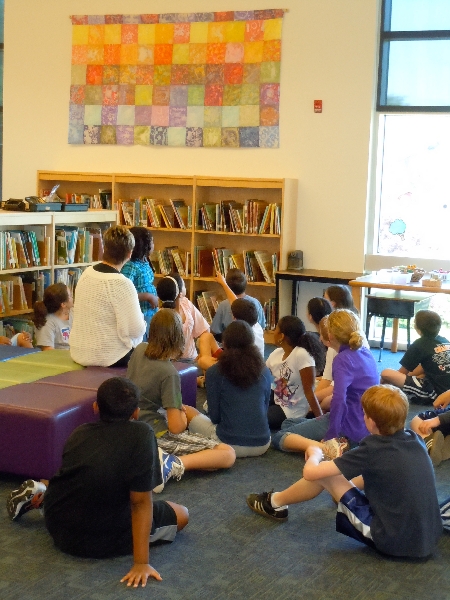Erdenheim Students Learn the Fine Art of Batik
Joe Barron, Springfield Sun News
The odor of hot wax filled the art room last week at Erdenheim Elementary School. Some students liked the smell. Others pinched their noses at the first whiff. Yet they all seemed to enjoy learning a new way to create something bright and beautiful.
“I love the smell. It’s so cool,” second-grader Sarah Cooper said during her art class May 4. It smells like steak, fourth-grader Luke Ciliberto announced at the beginning of the next period.
The students were taking part in a weeklong artist-in-residence program devoted to batik, the centuries-old Indonesian method for dyeing fabric. Classes were taught by the artist Laura Cohn of Bala Cynwyd, who specializes in the technique and visits the Far East several times a year. In explaining the art form to the children, Cohn added facts about Indonesia and even taught them a few words of the language. “The special thing about it is it’s got a whole cultural component,” she said at the school May 4, the last day of her residency.
Another component was the notion of art as a collective enterprise. In Indonesia, whole villages will work a month to produce a single piece of batik, and one lesson Cohn wanted the students to learn is the importance of giving back to the community, she said.
Over the week of April 30, Erdenheim students dyed 500 small squares of cotton, which volunteer mothers will sew into five quilts of various dimensions that will hang in the school library, said Cindy Hamilton of the Enfield-Erdenheim Home and School Partnership, which sponsors the artist-in-residence program. Items made from a few leftover squares will be raffled off at the partnership’s carnival May 19.
Batik artists use specialized tools called cantings (pronounced chantings) and stamps known as caps (pronounced “chops”) to apply wax to unfinished fabric. At Erdenheim, the students used brushes as well as a variety of household objects including forks, wooden spoons, combs, pie wheels and cookie cutters, which they dipped into skillets brimming with molten paraffin and beeswax. Then they trooped outside, where Cohn had them swish the cotton squares in buckets of dye. The wax kept the dye away from the cloth, preserving the color underneath. As the process went on, more wax was added, then more dye, as the sections of the cloth that remained exposed grew smaller and took on an ever-changing, ever-deepening array of colors.
“That’s a whirlpool, I call it,” second-grader Sabrina Wormley said as she watched Cohn stir the bucket. Finally, Cohn removed the layers of wax by dipping the cloth in hot water, and the squares were hung in the sun to dry. Each layer of wax was added by a different student, and during the course of the week, each student worked on one square during a single, 40-minute period in teacher Kristi Forjohn’s art class.
The artist-in-residence program supplements the students’ class work by exposing them to new ways of making art, Forjohn said. They love it, she said. They can’t wait for the artist-in-residence program every year.



